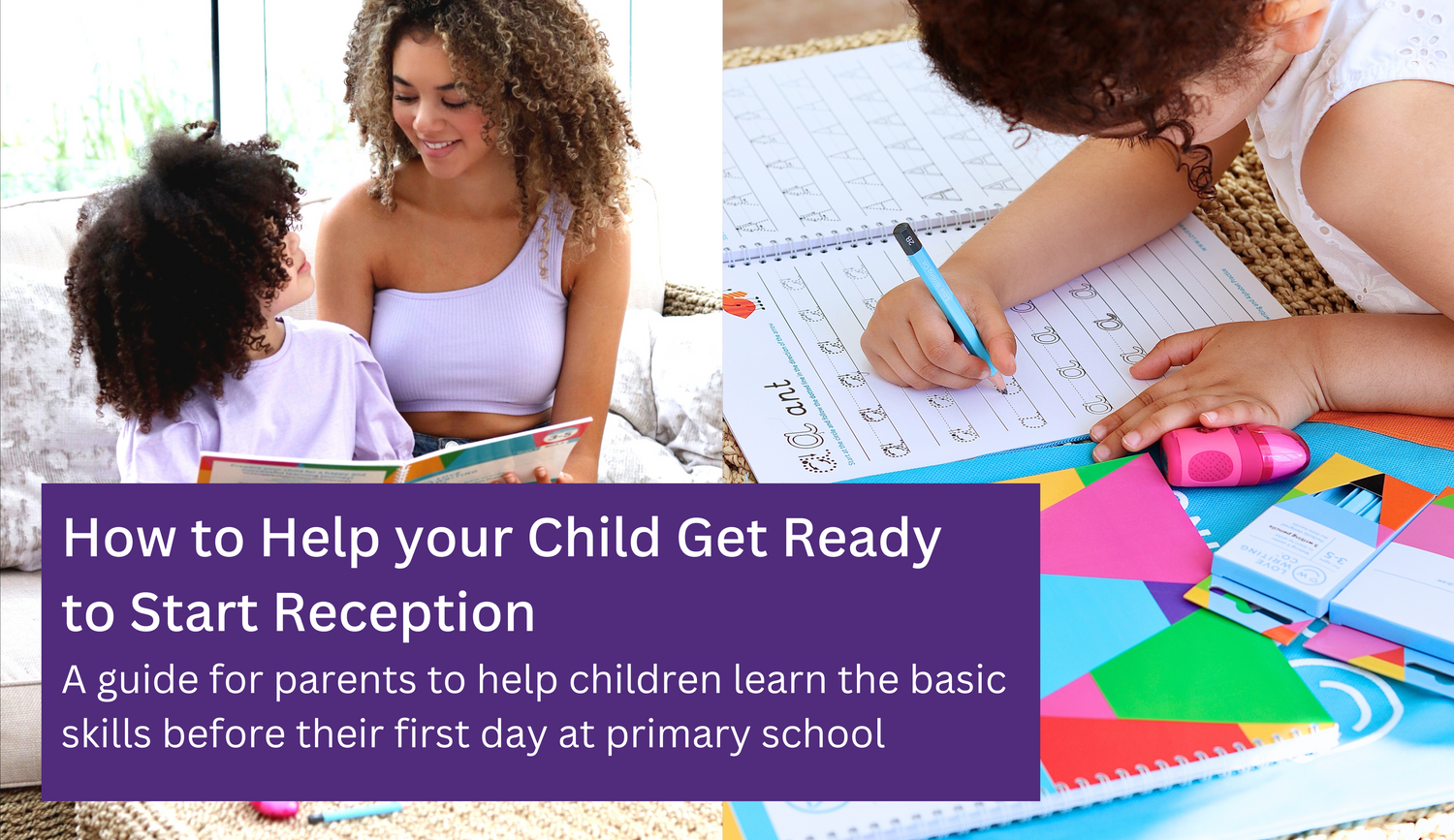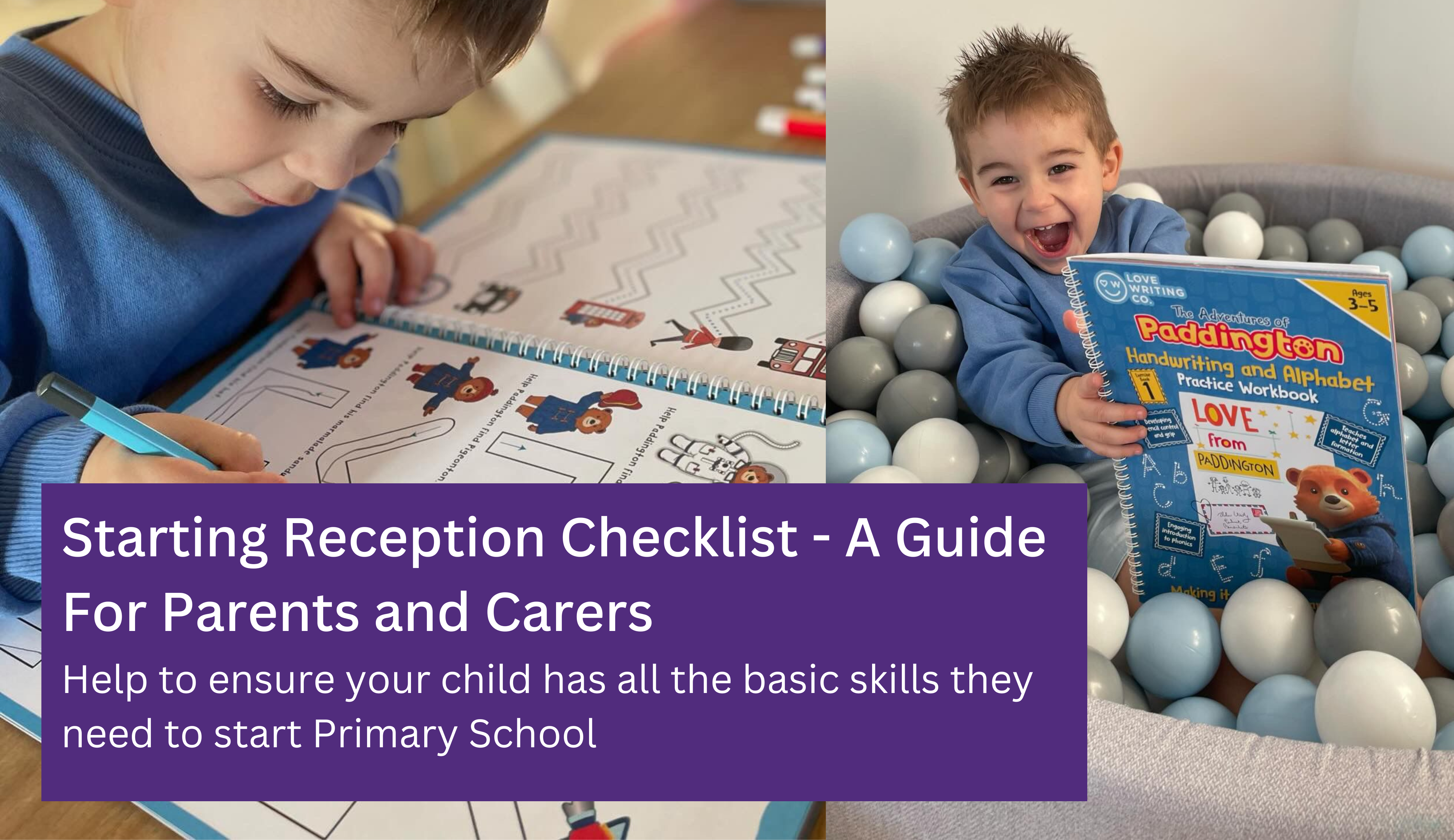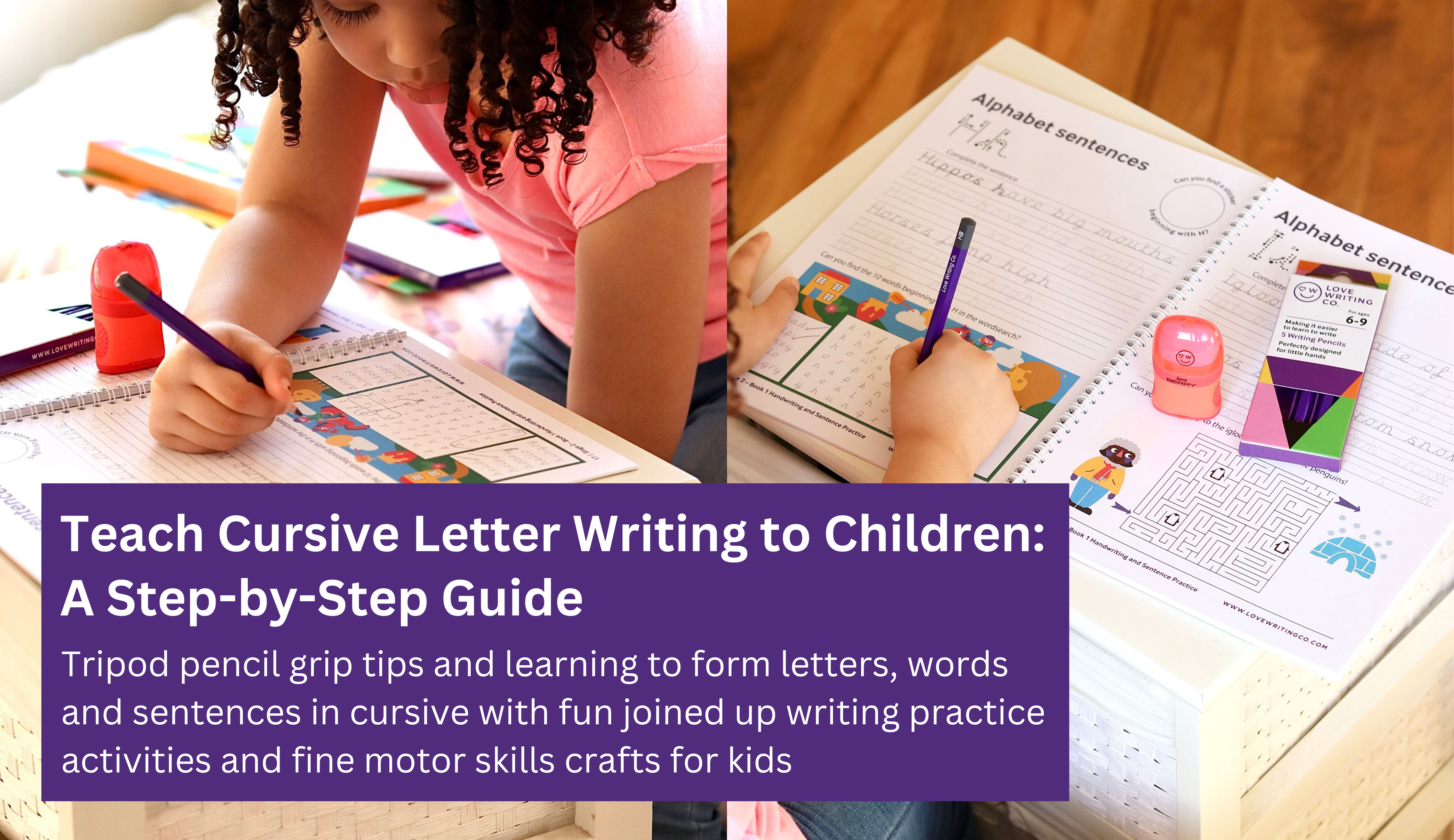A Guide for Parents to Help Children Learn the Basic Skills Before Starting Primary School
Starting primary school is a huge milestone in a child’s life. It's an exciting journey filled with new experiences, friendships and learning opportunities. For an easy and successful transition from preschool to reception, children need to develop key skills before they start their early years learning journey. From literacy and numeracy, to social and emotional school readiness - building these foundational skills will set your child up for success in school.
In this blog we’ll explore the essential skills your child should work on before their first day, why they are important and how you can support their learning journey at home using the correct tools and resources. Together, let's ensure your little one is fully prepared to embrace this new chapter of their lives with confidence and a positive attitude.
Make sure you check out our guide for parents on making the transition from pre-school to primary school for more helpful tips and tricks to make starting reception for the first time as easy and stress-free as possible.
Fine motor skills
Fine motor skills are the small muscles in our hands and fingers that help us to make small movements like holding a pencil, fastening our coats and eating independently with a knife and fork. The development of these skills are crucial for a child when starting their early years learning journey and will make all the difference in your child's confidence, independence and overall attitude to starting school for the first time.
There are so many ways to help your child strengthen their hands and build fine motor skills through mark-making activities, fun colouring and painting. These activities encourage play, creativity and help to improve pencil grip and control.
Our pre-writing early years activity books focus on building essential fine motor skills. You can take a look at them here.

Pre-writing Skills
Writing is a process that begins long before a child learns to form or even recognise letters. Building prewriting skills through mark-making activities are the very first steps in your child's learning to write journey.
Pre-writing skills are the basic lines and shapes children need to be able to draw before they can write the letters of the alphabet, these skills contribute to a child's ability to hold and use a pencil, and the ability to draw, write, copy, and colour.
Our Pre-Writing Skills range will introduce essential pre-writing shapes, help develop fine motor skills and get your pre-schooler get school ready. Tracing lines, shapes, curves and waves with lots of fun colouring activities, try our Pre-Writing Skills Bumper Starter Pack for children ages 2+.
This is the perfect starter pack for toddlers and preschoolers beginning their early years learning journey and developing their fine motor skills through fun tracing and mark-making activities.
All Love Writing Co. products are SEND friendly writing resources and are suitable for right and left-handers with a ring-bound and lay-flat design that has no ‘bump’ in the middle. Shop Pre-Writing Resources For ages 2+ here.
Help them write their name
Before starting primary school it's important for children to be able to recognise their own name through hearing it out loud, seeing it written down and actually being able to write it themselves. Learning their own name will help them to communicate effectively, build identity, feel a sense of individualism and will save countless trips to lost property! 😂
Some awesome ways to help your child to start recognizing their name written down are getting a sign for their bedroom door, putting name-tags in their clothes or using fridge magnet letters. Use dotted hand-writing fonts to create a traceable name writing activity sheet and have your child trace the letters and begin to familiarise themselves with the different shapes of each letter.
We can also strengthen our fine motor skills through drawing, colouring and painting name writing activities.
Check out our blog on How to Help your Child Write their Name Easily for more fun ideas and name writing craft activities for children
Learn letters A-Z
Before your child can learn to write they must first learn the Alphabet sounds. To help your child learn the Alphabet, start by singing the ABC song together. Singing along improves memory retention and helps to familiarise your child with the sequence of the letters. Use Alphabet flashcards, toys, books and games to make learning fun and engaging.
Endorsed by The British Dyslexia Association and recommended by Dr Gummers Good Play Guide our Complete Learn to Write Pack for children ages 3-5 has everything your child needs to begin their learning to write journey with ease. Developed to introduce the alphabet, letter formation and pencil control, 95% of children who used our writing practice packs had better writing from the first use and were able to write easier.
We believe that learning to write should be easy and accessible to all children so our products are all right and left-handed friendly with a ring-bound and lay-flat design with no ‘bump’ in the middle.
Our handwriting practice sets support fine motor skills, cognitive perception, memory retention through guided letter practice and fun activities.
Phonics practice
Building good phonics skills provides a solid foundation for life-long literacy skills that makes reading and writing easier and more enjoyable for children. Teaching the alphabet and practicing phonics to children helps them to become fluent and confident readers and writers.
After learning the alphabet we then must learn to blend those letters together like ‘pl’ for ‘plan’ or ‘st’ for ‘star’. There is a lot to learn and it can sometimes get confusing (even for us as parents) so practicing little and often is a great way to keep it fun and not frustrating.
Using our Handwriting Practice Books for just 15 minutes every day is just the right amount to improve literacy skills and build writing confidence.
Love Writing Co. offers a FREE Phonics Guide and Chart exclusive to newsletter subscribers. Sign up to our newsletter to receive 15% off your first order, free children's handwriting practice guides for parents and access to 50+ free printable writing practice activities for kids.
Learn numbers up to 20
When learning to count for the first time, children must learn to identify different numbers in order which helps to improve memory retention, problem solving skills and pattern recognition.
Learning numbers 1 to 20 develops a child's cognitive ability, builds a strong foundation for mathematics skills and is essential for children learning basic skills like counting objects, understanding money and telling the time.
Preparing your child for school goes beyond packing a backpack - it’s about instilling them with the right skills to thrive in the classroom. By focusing on early literacy, numeracy, social, and emotional school readiness, you’re not only giving them the tools they need for a positive and successful school experience but skills they will carry over for a lifetime.
Every child learns at their own pace, so be patient, make learning fun, and celebrate their progress along the way. With the right support and encouragement, your little one will be ready to take on this exciting new adventure with confidence. Here’s to a bright and successful start to their school journey!
And that's a wrap! We hope you find the information in this blog useful and feel inspired to try one new thing today to help prepare your child to start primary school with a positive attitude.
If you haven’t already, make sure you have signed up to our newsletter for exclusive access (you can sign up on the homepage).
If you’re looking for more handwriting resources to help your child who is starting school or to get back to school ready, check these out available for ages 2-9:
Handwriting and Letter Formation Practice Activity Workbooks
Fun Downloadable Activities for Kids










1 comment
Kidskastle
This insightful guide offers practical tips to prepare children for Reception, fostering independence and confidence through engaging activities.
Leave a comment
All comments are moderated before being published.
This site is protected by hCaptcha and the hCaptcha Privacy Policy and Terms of Service apply.